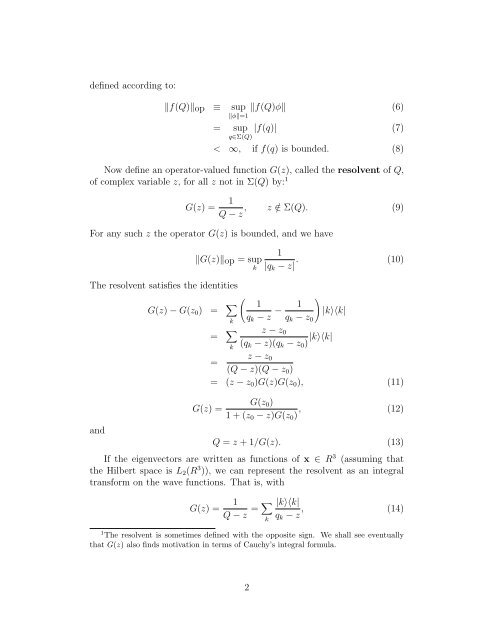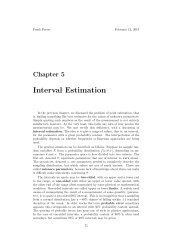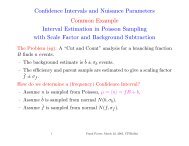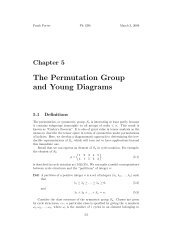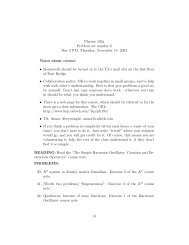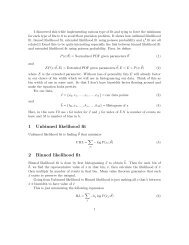1 Introduction 2 Resolvents and Green's Functions
1 Introduction 2 Resolvents and Green's Functions
1 Introduction 2 Resolvents and Green's Functions
You also want an ePaper? Increase the reach of your titles
YUMPU automatically turns print PDFs into web optimized ePapers that Google loves.
defined according to:<br />
‖f(Q)‖op ≡ sup ‖f(Q)φ‖ (6)<br />
‖φ‖=1<br />
= sup |f(q)| (7)<br />
q∈Σ(Q)<br />
< ∞, if f(q) is bounded. (8)<br />
Now define an operator-valued function G(z), called the resolvent of Q,<br />
of complex variable z, for all z not in Σ(Q) by: 1<br />
G(z) = 1 , z /∈ Σ(Q). (9)<br />
Q − z<br />
For any such z the operator G(z) is bounded, <strong>and</strong> we have<br />
‖G(z)‖op = sup<br />
k<br />
1<br />
|q k − z| . (10)<br />
The resolvent satisfies the identities<br />
G(z) − G(z 0 ) = ∑ ( 1<br />
k<br />
q k − z − 1 )<br />
|k〉〈k|<br />
q k − z 0<br />
= ∑ z − z 0<br />
k<br />
(q k − z)(q k − z 0 ) |k〉〈k|<br />
z − z 0<br />
=<br />
(Q − z)(Q − z 0 )<br />
= (z − z 0 )G(z)G(z 0 ), (11)<br />
<strong>and</strong><br />
G(z) =<br />
G(z 0 )<br />
1 + (z 0 − z)G(z 0 ) , (12)<br />
Q = z + 1/G(z). (13)<br />
If the eigenvectors are written as functions of x ∈ R 3 (assuming that<br />
the Hilbert space is L 2 (R 3 )), we can represent the resolvent as an integral<br />
transform on the wave functions. That is, with<br />
G(z) = 1<br />
Q − z = ∑ k<br />
|k〉〈k|<br />
q k − z , (14)<br />
1 The resolvent is sometimes defined with the opposite sign. We shall see eventually<br />
that G(z) also finds motivation in terms of Cauchy’s integral formula.<br />
2


